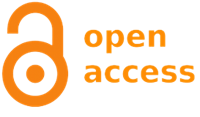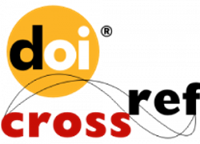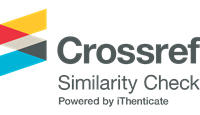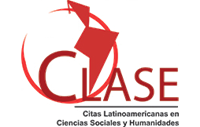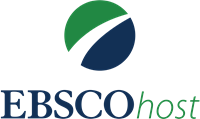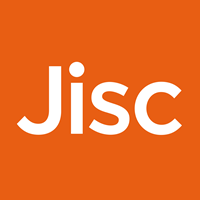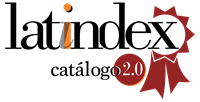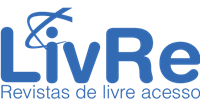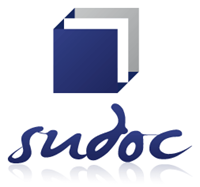Aprendizagem autorregulada com resultados de aprendizagem de matemática em termos de interesse dos alunos em aprender matemática
Resumo
Hoje em dia a matemática ainda é considerada difícil, por isso precisa de mais atenção porque a matemática é a base de outras ciências. Um dos fatores que influenciam os Resultados de Aprendizagem em Matemática (MLO) é a Aprendizagem Autorregulada (SRL). O SRL desempenha um papel no processo de planejamento e gerenciamento de tarefas acadêmicas dos alunos. O interesse em Aprender Matemática (ILM) também tem um papel importante na aprendizagem da matemática. O objetivo deste estudo foi determinar o efeito de cada aspecto da SRL nos resultados de aprendizagem da matemática e determinar o efeito da SRL na MLO em termos do nível de ILM do aluno. O autor utiliza métodos mistos com um desenho de pesquisa exploratória sequencial que começa com uma fase qualitativa usando pesquisa qualitativa descritiva e, em seguida, uma fase quantitativa usando um teste de correlação. Os aspectos da SRL incluem análise de tarefas, crença auto-motivada, autocontrole, monitoramento, auto-consideração e auto-reação. Os resultados deste estudo são de que há uma influência entre os aspectos da SRL na MLO, exceto para o aspecto da análise da tarefa. O SRL com MLO também não tem um efeito significativo quando visto a partir do nível de ILM.
Downloads
Referências
Abdurrahman, M. (1999). Education for children with learning difficulties. Rineka Cipta Press.
Abror, M. H. (2022). Self-regulated learning terhadap hasil belajar matematika siswa. Plusminus: Jurnal Pendidikan Matematika, 2(2), 233–242. Retrieved from https://karya.brin.go.id/id/eprint/16255/1/Jurnal_Muhammad%20Haikal%20Abror_UIN%20Sunan%20Kalijaga%20Yogyakarta_2022.pdf
Aini, N. (2022). Efforts to improve mathematics learning outcomes using the discovery learning method for class vi students of sdn 14 koto baru, dharmasraya district, even semester 2020/2021. InternationaL Journal of Technology Vocational Education and Training, 3(1), 53–56. DOI: https://doi.org/https://doi.org/10.46643/ijtvet.v3i1.141
Akinoso, S. O. (2011). Correlates of some factors affecting students’ achievement in secondary school mathematics in Osun State. In International Journal of Education, Science, Mathematics and Environmental Studies, 3(10), 83–95.
Akrim, A. (2022). Strategies for increasing students’ interest in learning (learning pie to print student character). Pustaka Ilmu Press.
Anigbo, L. C., & Idigo, E. (2015). Factors affecting students’interest in mathematics in secondary schools in enugu state. Journal of Science & Computer Education, 3(3). Retrieved from https://journals.aphriapub.com/index.php/JOSCED/article/view/188
Arieska, P. K., & Herdiani, N. (2018). Selection of sampling techniques based on relative efficiency calculations. Statistics Journal of Semarang Muhammadiyah University, 6(2), 166–171. DOI: https://doi.org/https://doi.org/10.26714/jsunimus.6.2.2018.%25p
Arikunto, S. (2010). Research procedure: a practical approach (Revised ed). Rineka Cipta.
Aryani, T. D., & Hasyim, M. (2018). The influence of mathematical anxiety, mathematical stress problems and self-regulated learning on student mathematics learning outcomes. Aksioma: Journal of Mathematics Education Study Program, 7(2), 243–252. DOI: https://doi.org/10.24127/ajpm.v7i2.1422
Brenner, C. A. (2022). Self-regulated learning, self-determination theory and teacher candidates’ development of competency-based teaching practices. Smart Learning Environments, 9(3), 1–14. DOI: https://doi.org/10.1186/s40561-021-00184-5
Bungsu, T. K., Vilardi, M., Akbar, P., & Bernard, M. (2019). The effect of learning independence on math learning outcomes at smkn 1 cihampelas. Journal on Education, 1(2), 382–389. DOI: https://doi.org/10.31004/joe.v1i2.78
Christina, L. V., & Kristin, F. (2016). The effectiveness of group investigation (gi) and cooperative integrated reading and composition (circ) type learning models in improving critical thinking creativity and social studies learning outcomes of grade 4 students. Scholaria: Journal of Education and Culture, 6(3 SE-Articles), 217–230. DOI: https://doi.org/10.24246/j.scholaria.2016.v6.i3.p217-230
Cleopatra, M. (2015). The influence of lifestyle and learning motivation on mathematics learning achievement. Formatif: Scientific Journal of Mathematics and Natural Sciences Education, 5(2), 168–181. DOI: https://doi.org/10.30998/formatif.v5i2.336
Fansuri, K., Payadnya, I. P. A. A., & Putri, G. A. M. A. (2022). The influence of interest in learning on mathematics learning outcomes of grade vii junior high school students (slub) Saraswati 1 Denpasar school year 2021/2022. PEMANTIK: Journal of Mathematics Learning and Development, 2(2), 138–147. DOI: https://doi.org/10.36733/pemantik.v2i2.5114
Fasikhah, S. S., & Fatimah, S. (2013). Self-regulated learning (SRL) in improving academic achievement in students. Scientific Journals of Applied Psychology, 1(1), 145–155. DOI: https://doi.org/https://doi.org/10.22219/jipt.v1i1.1364
Goolsby, L. (2013). School interest. Boston: Allyn and Bacon.
Handayani, S., & Sholikhah, N. (2021). The effect of self-efficacy and self-regulated learning on student learning achievement during online learning. Edukatif: Journal of Educational Sciences, 3(4), 1373–1382. DOI: https://doi.org/10.31004/edukatif.v3i4.553
Hanna, H. (2019). The effect of efficiency, trust and convenience on customer satisfaction in using internet banking at BNI Syariah bank cirebon branch. Cirebon Flower Islamic Institute. Retrieved from https://repository.bungabangsacirebon.ac.id/xmlui/handle/123456789/319
Heriyati, H. (2017). The influence of interest and motivation in learning on mathematics learning achievement. Formatif: Scientific Journal of Mathematics and Natural Sciences Education, 7(1), 22–32. DOI: https://doi.org/10.30998/formatif.v7i1.1383
Hutapea, R. H. (2019). Non-test evaluation instruments in the assessment of learning outcomes of the affective and psychomotor realms. BIA’: Journal of Theology and Contextual Christian Education, 2(2), 151–165. DOI: https://doi.org/10.34307/b.v2i2.94
Idigo, E. C. (2010). Effective method of Retaining Students Interest in Mathematics in Secondary Schools in Enugu East local Government area of Enugu State. Institute of Ecumenical Education, Thinker’s Corner, Enugu, in Affiliation with (ESUT).
Isnaini, A. I. (2019). Design and pilot use of performance assessment instruments to measure students' psychomotor skills in reaction rate practicum. Universitas Islam Negeri Sultan Syarif Kasim Riau. Retrieved from https://repository.uin-suska.ac.id/22100/
Itasari, K., & Sumardi, S. (2018). Contribution of personality, facilities, and parental monitoring to the discipline and learning outcomes of smk students. SEMPOA (National Seminars, Props Exhibition, and Mathematical Olympiads). Retrieved from https://publikasiilmiah.ums.ac.id/xmlui/handle/11617/10111
Jiang, Y., Wang, P., Li, Q., & Li, Y. (2022). Students’ intention toward self regulated learning under blended learning setting: pls-sem approach. Sustainability, 14(16), 10140. DOI: https://doi.org/10.3390/su141610140
Kayatun, S., & Kresnadi, H. (2014). Use of group work methods to improve primary school mathematics learning outcomes. JPPK: Journal of Equatorial Education and Learning, 3(4). DOI: https://dx.doi.org/10.26418/jppk.v3i4.5384
Kerlin, B. A. (1992). Cognitive Engagemant Style: Self-Regulated Learning and Cooperative Learning.
Lestari, I. (2015). The effect of study time and interest in learning on mathematics learning outcomes. Formatif: Scientific Journal of Mathematics and Natural Sciences Education, 3(2), 115–125. DOI: https://doi.org/10.30998/formatif.v3i2.118
Lohr, S. L. (2021). Sampling: design and analysis. CRC Press.
Meiliati, R., Darwis, M., & Asdar, A. (2018). The influence of learning motivation, self-efficacy, and self-regulated learning on mathematics learning outcomes. IMED - Issues in Mathematics Education, 2(1), 83–91. DOI: https://doi.org/https://doi.org/10.35580/imed9484
Munahefi, D. N., Kartono, Waluya, B., & Dwijanto. (2022). Analysis of self-regulated learning at each level of mathematical creative thinking skill. Bolema: Mathematics Education Bulletin, 36(72), 580–601. DOI: http://dx.doi.org/10.1590/1980-4415v36n72a26
Nabillah, T., & Abadi, A. P. (2020). Factors causing low student learning outcomes. Prosiding Sesiomadika, 2(1c SE-Artikel). Retrieved from https://journal.unsika.ac.id/index.php/sesiomadika/article/view/2685
Nasrum, A. (2018). Test data normality for research. Jayapangus Press Books. Retrieved from http://book.penerbit.org/index.php/JPB/article/view/115
Németh, J., & Long, J. G. (2012). Assessing learning outcomes in US planning studio courses. Journal of Planning Education and Research, 32(4), 476–490. DOI: https://doi.org/10.1177/0739456X12453740
Nurhasanah, S., & Sobandi, A. (2016). Learning interest as a determinant of student learning outcomes. Journal of Office Management Education, 1(1), 128. DOI: https://doi.org/10.17509/jpm.v1i1.3264
Okonkwo, S. C. (1998). Development and validation of mathematics readiness test for junior secondary school students. University of Nigeria Nsukka, Nsukka.
Pachón-Basallo, M., de la Fuente, J., González-Torres, M. C., Martínez-Vicente, J. M., Peralta-Sánchez, F. J., & Vera-Martínez, M. M. (2022). Effects of factors of self-regulation vs. factors of external regulation of learning in self-regulated study. Frontiers in Psychology, 13. Retrieved from https://www.frontiersin.org/journals/psychology/articles/10.3389/fpsyg.2022.968733
Pisani, L. (2017). The relationship between self-regulation and the tendency to impulsive purchases in late adolescence towards goods products [Sanata Dharma University]. Retrieved from https://repository.usd.ac.id/12308/
Prabowo, Y., & Ristiana, M. G. (2022). Online learning summing fractions to problem-solving ability in third graders using a contextual approach. COLLASE (Creative of Learning Students Elementary Education), 5(4), 782–787. DOI: https://doi.org/10.22460/collase.v5i4.6219
Prastika, Y. D. (2020). The influence of student interest in learning on the mathematics learning outcomes of smk yadika bandar lampung students. Scientific Journal of Realistic Mathematics, 1(2), 17–22. DOI: https://doi.org/10.33365/ji-mr.v1i2.519
Priyatno, D. (2016). Learn data analysis tools and how to process them with SPSS. Gava Media Press.
Purnama, I. M. (2016). The influence of emotional intelligence and interest in learning on mathematics learning achievement at sman south jakarta. Formatif: Scientific Journal of Mathematics and Natural Sciences Education, 6(3), 233–245. DOI: https://doi.org/10.30998/formatif.v6i3.995
Rafiq, H. M. W., Fatima, T., Sohail, M. M., Saleem, M., & Khan, M. A. (2013). Parental involvement and academic achievement: A study on secondary school students of Lahore, Pakistan. International Journal of Humanities and Social Science, 3(8), 209–223. DOI: https://www.ijhssnet.com/journal/index/1774
Riduwan, M. B. A. (2003). Basics of statistics. Alfabeta Press.
Ruliyanti, B. D. (2014). The relationship between self-efficacy and self-regulated learning and the academic achievement of mathematics students in sman 2 bangkalan. Character: Journal of Psychological Research, 3(2). DOI: https://ejournal.unesa.ac.id/index.php/character/article/view/10976
Setiawan, K. (2019). Research methodology textbook (one-way anova). Universitas Lampung Press.
Shantiyana, I. (2019). The influence of student content knowledge (ck), pedagogical content knowledge (pck), and self-regulated learning (srl) on student mathematics learning outcomes [Ganesha University of Education, Bali, ID]. Retrieved from https://repo.undiksha.ac.id/405/
Sholiha, T. A., Kurniati, N., Tyaningsih, R. Y., & Prayitno, S. (2022). The effect of self-regulated learning (srl) on mathematics learning outcomes of grade xi sman 1 masbagik students. Scientific Journal of the Education Profession, 7(3 SE-Articles), 1355–1362. DOI: https://doi.org/10.29303/jipp.v7i3.745
Sigit, D. V., Ernawati, E., & Qibtiah, M. (2017). The relationship between environmental knowledge and the ability to solve environmental pollution problems in students of sman 6 tangerang. Biosfer: Journal of Biology Education, 10(2), 1–6. DOI: https://doi.org/10.21009/biosferjpb.10-2.1
Simbolon, N. (2014). Factors affecting learners’ interest in learning. Elementary School Journal Pgsd Fip Unimed, 1(02), 14–19. DOI: https://doi.org/10.24114/esjpgsd.v1i2.1323
Sirait, E. D. (2016). The influence of interest in learning on mathematics learning achievement. Formatif: Scientific Journal of Mathematics and Natural Sciences Education, 6(1), 35–43. DOI: https://doi.org/10.30998/formatif.v6i1.750
Subarianto, S., Ikhsan, M., & Munzir, S. (2019). Improve students’ mathematical representation and problem-solving skills through a problem posing approach in mathematics learning. Jurnal Peluang, 7(1), 127–135. DOI: https://doi.org/https://doi.org/10.24815/jp.v7i1.13516
Sudarsana, U. (2014). Construction of read interest. Terbuka University.
Sugiyono, P. D. (2012). Qualitative and r&d quantitative research methods. Alfabeta Press.
Suhendri, H. (2011). The influence of mathematical–logical intelligence and self-regulated learning on mathematics learning outcomes. Formatif: Scientific Journal of Mathematics and Natural Sciences Education, 1(1), 306–315. DOI: https://doi.org/10.30998/formatif.v1i1.61
Taub, M., Banzon, A. M., Zhang, T., & Chen, Z. (2022). Tracking changes in students’ online self regulated learning behaviors and achievement goals using trace clustering and process mining. Frontiers in Psychology, 13. DOI: https://doi.org/10.3389/fpsyg.2022.813514
Widana, I. W., & Muliani, N. P. L. (2020). Test analysis requirements. Klik Media Press.
Winne, P. H., & Perry, N. E. (2000). Measuring Self-Regulated Learning. Academic Press.
Wiratna, S. (2014). Metodologi penelitian: lengkap, praktis dan mudah dipahami. Pustaka Baru Press.
Young, M. R., Klemz, B. R., & Murphy, J. W. (2003). Enhancing learning outcomes: The effects of instructional technology, learning styles, instructional methods, and student behavior. Journal of Marketing Education, 25(2), 130–142. DOI: https://doi.org/10.1177/0273475303254004
Zahary, M. (2015). Improving students’ mathematics learning achievement through self-regulated learning strategies. National Seminar on Mathematics and Mathematics Education at Yogyakarta State University, 163–168. Retrieved from http://seminar.uny.ac.id/semnasmatematika/sites/seminar.uny.ac.id.semnasmatematika/files/banner/PM-24.pdf
Zimmerman, B. J. (1990). Self-regulated learning and academic achievement: an overview. Educational Psychologist, 25(1), 3–17. DOI: https://doi.org/10.1207/s15326985ep2501_2
Zimmerman, B. J. (2008). Investigating self-regulation and motivation: historical background, methodological developments, and future prospects. American Educational Research Journal, 45(1), 166–183. DOI: https://doi.org/10.3102/0002831207312909
Zulaikha, D., Kaswari, K., & AH, M. (2014). Correlation of reading comprehension ability with writing narrative essays. Untan Journal of Education and Learning, 3(4). Retrieved from https://www.neliti.com/publications/214203/korelasi-kemampuan-membaca-pemahaman-dengan-menulis-karangan-narasi
This work is licensed under a Creative Commons Attribution 4.0 International License.
DECLARAÇÃO DE ORIGINALIDADE E DIREITOS AUTORAIS
Declaro que o presente artigo é original, não tendo sido submetido à publicação em qualquer outro periódico nacional ou internacional, quer seja em parte ou em sua totalidade.
Os direitos autorais pertencem exclusivamente aos autores. Os direitos de licenciamento utilizados pelo periódico é a licença Creative Commons Attribution 4.0 (CC BY 4.0): são permitidos o compartilhamento (cópia e distribuição do material em qualquer suporte ou formato) e adaptação (remix, transformação e criação de material a partir do conteúdo assim licenciado para quaisquer fins, inclusive comerciais).
Recomenda-se a leitura desse link para maiores informações sobre o tema: fornecimento de créditos e referências de forma correta, entre outros detalhes cruciais para uso adequado do material licenciado.









